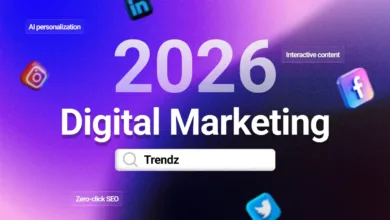Video is the New SEO Gold: Don’t Get Left Behind

▼ Summary
– Younger users are increasingly using platforms like TikTok and YouTube for discovery, shifting search behavior away from traditional engines.
– Google’s AI Overviews now pull from a wider range of sources, including user-generated video content from TikTok, Reddit, and YouTube.
– Video content has evolved from optional to essential, as Google treats it as credible source material for experiential and tutorial queries.
– Brands must diversify content strategies to include video, visuals, and transcripts, and optimize for discoverability across platforms.
– SEO now requires a cross-channel approach, integrating video and other formats to meet audience preferences and appear in AI Overviews.
A quiet revolution is reshaping how people find information online, and video content is rapidly becoming the cornerstone of modern search engine optimization. Younger audiences increasingly turn to platforms like TikTok and YouTube not just for entertainment, but for answers. Whether it’s styling wide-leg jeans or fixing a clogged drain, visual platforms now serve as primary discovery tools. This shift isn’t happening in isolation, it’s directly influencing Google’s search results, especially with the introduction of AI Overviews.
The relationship between Google and video is nothing new. YouTube has been part of the Google ecosystem since 2006, and over time, video carousels, rich snippets, and highlighted key moments have claimed more real estate on search engine results pages. What was once a supplementary content format has now become essential. AI Overviews represent the most significant change to Google’s search experience in decades, moving beyond the classic “10 blue links” to deliver summarized, multi-source answers, and video is front and center in this new approach.
Google is now pulling from a wider array of sources than ever before, including TikTok clips, Instagram Reels, Reddit threads, and YouTube videos. These aren’t buried deep in the results, they’re prominently featured, often serving as the primary answer to user queries. This signals a fundamental shift in what Google deems credible. Video is increasingly treated as an authoritative source, especially for searches that benefit from visual demonstration, such as tutorials, product reviews, or experiential content.
This evolution carries several important implications. Video is becoming a primary source material for AI-generated summaries, meaning brands can no longer treat it as optional. Short-form content from platforms like TikTok is influencing user expectations and even shaping the kinds of answers Google prioritizes. This doesn’t render long-form content obsolete, but it does mean that brands must adopt a more varied content strategy, one that includes video, visuals, transcripts, and structured data.
A common question arises: does every brand need a TikTok presence? Not necessarily. What matters most is whether video helps you answer your audience’s questions more effectively than text alone. Gen Z may prefer TikTok, while professionals might lean toward YouTube or LinkedIn. The key is understanding where your audience searches and what formats they trust. Your goal shouldn’t be virality, it should be visibility. A simple, clear video that solves a specific problem can be far more valuable than a viral hit with minimal relevance.
To align video with your search strategy, start by auditing your current content. Identify which queries lend themselves to visual answers and see what videos currently rank for those terms. If they’re not yours, that’s an opportunity. Focus on creating problem-solving videos that address common customer questions. Use descriptive titles, include transcripts for accessibility and crawlability, and apply schema markup to help search engines understand your content. Don’t limit yourself to one platform, experiment with TikTok, YouTube, or others where your audience is active.
This new era demands a broader skillset from SEO professionals. Understanding cross-channel strategy is now as important as traditional keyword research. For brands, the challenge is building a library of useful video content that complements existing text-based SEO efforts. For users, the benefit is a richer, more intuitive search experience, one that delivers answers in the format they prefer.
Looking ahead, Google’s definition of credible sources will continue to evolve, but one thing is clear: video is no longer optional in SEO. Brands that embrace this shift, optimize for AI Overviews, and create video content that educates and demonstrates will be better positioned for future search visibility. In this new landscape, video isn’t just part of the conversation, it’s becoming the foundation of how search works.
(Source: Search Engine Land)





